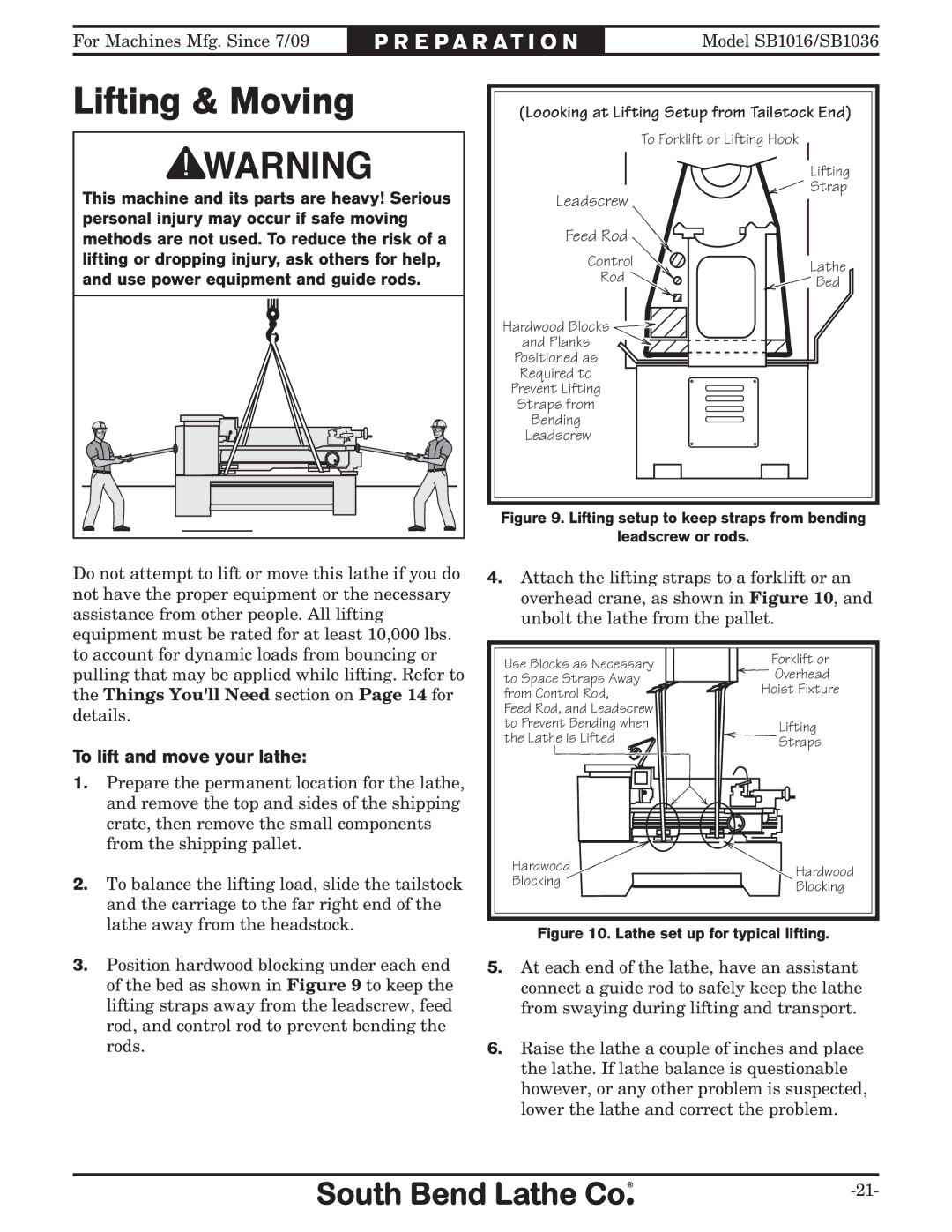
For Machines Mfg. Since 7/09 | P R E P A R A T I O N | Model SB1016/SB1036 |
Lifting & Moving
This machine and its parts are heavy! Serious personal injury may occur if safe moving methods are not used. To reduce the risk of a lifting or dropping injury, ask others for help, and use power equipment and guide rods.
(Loooking at Lifting Setup from Tailstock End) | ||
| To Forklift or Lifting Hook | |
| Lifting | |
Leadscrew | Strap | |
| ||
Feed Rod |
| |
Control | Lathe | |
Rod | ||
Bed | ||
| ||
Hardwood Blocks |
| |
and Planks |
| |
Positioned as |
| |
Required to |
| |
Prevent Lifting |
| |
Straps from |
| |
Bending |
| |
Leadscrew |
| |
Figure 9. Lifting setup to keep straps from bending
leadscrew or rods.
Do not attempt to lift or move this lathe if you do not have the proper equipment or the necessary assistance from other people. All lifting equipment must be rated for at least 10,000 lbs. to account for dynamic loads from bouncing or pulling that may be applied while lifting. Refer to the Things You'll Need section on Page 14 for details.
To lift and move your lathe:
1.Prepare the permanent location for the lathe, and remove the top and sides of the shipping crate, then remove the small components from the shipping pallet.
2.To balance the lifting load, slide the tailstock and the carriage to the far right end of the lathe away from the headstock.
3.Position hardwood blocking under each end of the bed as shown in Figure 9 to keep the lifting straps away from the leadscrew, feed rod, and control rod to prevent bending the rods.
4.Attach the lifting straps to a forklift or an overhead crane, as shown in Figure 10, and unbolt the lathe from the pallet.
Use Blocks as Necessary | Forklift or | |
Overhead | ||
to Space Straps Away | ||
from Control Rod, | Hoist Fixture | |
Feed Rod, and Leadscrew |
| |
to Prevent Bending when | Lifting | |
the Lathe is Lifted | Straps |
Hardwood | Hardwood | |
Blocking | ||
Blocking | ||
|
Figure 10. Lathe set up for typical lifting.
5.At each end of the lathe, have an assistant connect a guide rod to safely keep the lathe from swaying during lifting and transport.
6.Raise the lathe a couple of inches and place the lathe. If lathe balance is questionable however, or any other problem is suspected, lower the lathe and correct the problem.
